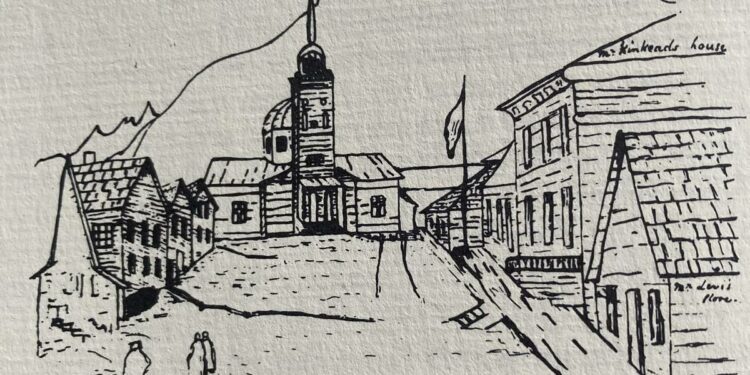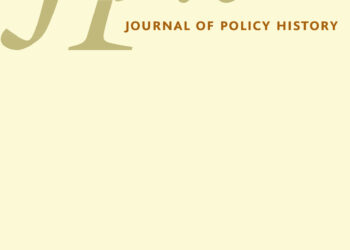Read the full series, Josie’s Story, here.
The casual dinner conversation that launched this series led to several years of research in Alaska libraries and archives, internet deep dives and multiple conversations over photo albums and family papers with the descendants of Josie Rudolph, the first settler girl born in American Sitka.
The resulting historical narrative, written for a general audience, isn’t footnoted. I’m listing my most important sources below, as a guide for further investigation. This research was funded in part with an arts and culture grant from the Alaska Center for Excellence in Journalism.
For an earlier Anchorage Daily News project, I studied the early years of Nazi Germany in connection with the failed plan to bring German Jews to the Alaska territory before the war. But I knew little about the Nuremberg region.
For example, when I saw that Martin Thurnauer had lived in a Nuremberg suburb in 1933 on Julius Streicher Strasse, I tried to find the present-day street on Google Maps. Apparently, the street name had been changed. Further research revealed why: Julius Streicher, the Nazi chief of the region, had been a viciously antisemitic newspaper publisher hanged after the war as a Nazi war criminal.
The staff of the Alaska State Library and the state archives in Juneau helped orient me on documentation of the early history of Southeast Alaska. Emil Teichmann’s book about visiting Alaska in 1868 was an exciting discovery — I could hardly believe no historian had retold in any detail the story of a secret agent in Sitka. Another visitor, Lady Jane Franklin, was better remembered thanks to the Alaska Historical Society’s thoughtful 1981 reissue of the 1870 journal kept by her niece, Sophia Cracroft. Robert DeArmond’s introduction to that edition describes the early town in intimate detail.
Other primary sources include U.S. Army reports to Congress and the records of Sitka’s first city government, written in longhand and available on microfilm. The Alaska Historical Society has an online source of references assembled in 2017 on the occasion of the 150th anniversary of the “Alaska Purchase.”
Especially helpful books about that early period were those listed below by Hinckley, Mitchell and Poulson. Regarding the early history of the Tlingit homelands, I had help sorting out clan histories from Chuck Smythe, the senior ethnologist with the Sealaska Heritage Institute. Regarding the intersection of the Jewish diaspora and the American frontier, Leslie Fried with the Alaska Jewish Museum pointed me toward the online resource of the Jewish Museum of the American West.
Many people in Sitka were helpful, above all writer and historian Rebecca Poulson, Jackie Fernandez at the Sheldon Jackson Museum, Joanna Perensovich at the city library, and Louise Brady with the Sitka Tribe of Alaska. A number of Alaska historians were consulted along the way, with particular help from Chris Allan, Ian Hartman and Phil Wight. And I should acknowledge the ever-helpful interlibrary loan staff at my own municipal library in Homer.
This story would not have been possible without the enthusiasm of Josie Rudolph’s great-granddaughters, Amy Weiss and Susie Hoffman, and their extended family. Online data sources, including ancestry.com and newspapers.com, provided some corroborating documents. It is highly possible that the worn copy I obtained from the state library of Rudolf Ganz’s 1953 study, “The Jews in American Alaska (1867-1880),” was one of the books delivered to Alaska in 1968 by Martin Thurnauer, Josie’s son.
Early Sitka primary sources
U.S. Army, Enumeration of Sitka, Alaska Territory, report to Congress/US Secretary of War, prepared by Major John B. Tidball, Dec. 20, 1870.
U.S. Army Census of Sitka, Alaska, September 20, 1872.
U.S. Army, Report of commanding officer Jefferson C. Davis, Territory of Alaska August 20, 1870.
Report of the Hon. Vincent Colyer, United States special Indian commissioner, on the Indian tribes and their surroundings in Alaska territory, from personal observation and inspection in 1869.
Sitka town records, 1867-1873, microfilm, Sitka city library and Alaska state historical library.
Sitka Times Sept 19 – Nov. 7, 1868
Alaska Times April 23, 1869 – Oct 23, 1870 in Sitka, then to May 14, 1871 in Seattle
William Seward speech at Sitka, August 1869.
Early Sitka books, articles, online sources
Emil Teichmann, “A Journey to Alaska in the Year 1868. “New York: Argosy Antiquarian, 1963.
R.N. DeArmond, ed., “Lady Franklin Visits Sitka, Alaska 1870: The Journal of Sophia Cracroft. ” Alaska Historical Society, 1981.
Ted C. Hinckley, “The Americanization of Alaska 1867-1897.” Pacific Books, 1972
Stanley Remsberg, “United States Administration of Alaska: The Army Phase, 1867-1877; A Study in Federal Governance of an Overseas Possession” University of Wisconsin, Madison, PhD dissertation, 1975. in Alaska State Archives.
Rebecca Poulson and Cora Dow, “Sitka Alaska: A Short History.” Sitka Maritime Heritage Society, 2023.
Rebecca Poulson, Sitka Art Blog, “Lost Decade 1867-1877 Historical Materials for Schools”, Oct 6, 2020 and “Sitka’s Lost Decade 1867-1877″, October 18, 2017.
R.N. DeArmond, “A Voyage in a Dory: From Sitka to Tacoma by Oars, Sail and Tow Rope.” Arrowhead Press, 1999.
Richard A. Pierce, “Builders of Alaska: The Russian Governors 1818-1867.” The Limestone Press, 1986.
Ted C. Hinckley, “William H. Seward Visits His Purchase” Oregon Historical Quarterly Vol 72, No. 2 , June 1972 pp 127-147
Speeches of William H. Seward in Alaska, Vancouver and Oregon, August 1869. Philp and Solomons, 1869
Frederick W. Seward, Seward at Washington as Senator and Secretary of State, 1861-1872, vol. 3, Derby and Miller, 1891.
Michael Dunham, “The Man Who Bought Alaska.” Todd Communications, 2016.
Walter Stahr, “Seward: Lincoln’s Indispensable Man.” Simon and Schuster, 2012
Chris Allan, “Ho for Sitka: Special Correspondents and the Race to Report on the 1867 Transfer.” Alaska History, Vol 32, No. 2, Fall 2017, pp 1-26.
Chris Allan, ed. “On the Ragged Edge of Empire, Art and Architecture of Sitka, Alaska by Eadweard Muybridge and John Fuller, 1867-1868.” Alaska Historical Society, Eyewitness Series, 2022
Chris Allan, ed. “As the Old Flag Came Down: Eyewitness Accounts of the Oct. 18, 1867 Alaska Transfer Ceremony.” Alaska Historical Society Eyewitness Series, 2018
Tricia Brown, ed. “The View From the Future 2017: Fifty Years after the Alaska Purchase Centennial.” State of Alaska Division of Libraries, 2015.
Stephen W. Haycox, “Alaska: An American Colony.” University of Washington Press, 2020
Clarence Hulley, “Alaska, Past and Present.” Binford and Morts, 1953.
Hubert Howe Bancroft, “History of Alaska 1730-1885.” Antiquarian Press, 1959 (original 1886).
Tlingit history in the transition period
Rosita Worl, “Tlingit Law, American Injustice, and the Destruction of Tlingit Villages.” Sealaska Heritage Institute, 2019
Donald Craig Mitchell, “Sold American: The Story of Alaska Natives and their land, 1867-1959.” University Press of New England, 1997
Chris McNeil, “The Significance of Tlingit and Haida Indians of Alaska v. United States.” Sealaska Heritage Institute. 2023
Zachary Jones tells a vivid story of the 1869 Fort Wrangel battle, drawing on oral Tlingit stories along with Army accounts, in “Battlefield Alaska,” Alaska History, Vol. 34, No. 1, Spring 2019, pp 32-55.
Robert E. Price, “The Great Father in Alaska: The Case of the Tlingit and Haida Salmon Fishery.” First Street Press, 1990.
Jennifer Schuessler, “What is ‘Settler Colonialism’?” New York Times, Jan. 22, 2024.
Jewish diaspora and frontier/Alaska
Mark Wischnitzer, “To Dwell in Safety: The Story of Jewish Migration since 1800.” The Jewish Publication Society of America. Philadelphia 1948
Shari Rabin, Jews on the Frontier: Religion and Mobility in Nineteenth Century America. NYU Press, 2017.
Rudolf Glanz, “The Jews in American Alaska” (1867-1880). New York: 1953.
Bernard Postal, “Jews in the Story of Alaska,” American Jewish Congress: Congress Weekly, vol. 25, no. 12, July 21, 1958.
Hasia R. Diner, “A Time for Gathering: The Second Migration 1820-1880.” The Jewish People in America series. Johns Hopkins University Press, 1992.
Leslie Fried and J. Pennelope Goforth, “From Purchase to Prosperity, The Jewish Founders of the Alaska Commercial Company and their contribution to the acquisition of America’s last frontier” (online exhibit) Alaska Jewish Museum.
“The American Wild West: A Third Golden Age for Jewry.” Jewish Museum of the American West, Pomona, California.
Sarah Tobe, “The New Frontiers”, The Scribe, The Journal of the Jewish Historical Society of B.C., vol. 19, No. 2 1999.
Robert DeArmond, “Jews in Early Alaska, Part Six”, Daily Sitka Sentinel, Sitka, Alaska March 14, 1996, p. 5.
Jewish emigration in the 1930s and rise of the Nazis
Tom Kizzia, “Sanctuary: Alaska and the Holocaust” four-part series in Anchorage Daily News, 1999.
“The Problem of Alaskan Development” (aka The Slattery Report), U.S. Department of the Interior, Harold L. Ickes, Secretary, Washington, D.C. 1939/1940. A complete transcript of the testimony before Congress on the King-Havenner bill is available in “Settlement and Development of Alaska,” hearings before a subcommittee of the Committee on Territories and Insular Affairs, U.S. Senate, S. 3577, May 13, 15, and 18, 1940.
David Wyman, “Paper Walls: America and the refugee crisis 1938-1941.” University Massachusetts Press 1968.
Harry Feingold, The Politics of Rescue. Rutgers University Press, 1970.
Lucy Dawidowicz, “The War Against the Jews, 1933-1945.” Holt, Rinehart and Winston, 1975.
Rafael Medoff, “The Jews Should Keep Quiet: Franklin D. Roosevelt, Rabbi Stephen S. Wise, and the Holocaust.” University of Nebraska Press, 2019.
Jewish Museum of Berlin 1933 archives project: Expulsion of Martin Thurnauer from German Alpine Club, Monday 13 November 1933,
“The Nuremberg Race Laws,” US Holocaust Memorial Museum.
Eliza Apperly, “Stumbling stones: a different vision of Holocaust remembrance,” The Guardian, Feb 18, 2019.
“Streicher Admits Destruction of Nuremberg Synagogue,” archive of Jewish Telegraphic Agency, April 30, 1946.
On U.S. immigration laws and marriage of women
Meg Hacker, “When Saying ‘I Do’ Meant Giving Up Your U.S. Citizenship”, Prologue Magazine, National Archives, 2014.
Marian L. Smith, “Any woman who is now or may hereafter be married…” Prologue Magazine, National Archives, vol 30, No. 2, Summer 1998.
Dara Lind, Birthright Citizenship, Explained, Vox, Oct. 30, 2018.
Leti Volpp, “Divesting Citizenship: On Asian American History and the Loss of Citizenship Through Marriage,” UCLA Law Review, Vol. 52, 2005.
Felice Batlan, “’She Was Surprised and Furious’: Expatriation, Suffrage, Immigration, and the Fragility of Women’s citizenship, 1907-1940. Stanford Journal of Civil Rights and Civil Liberties, 2020 pp. 315-349.
Source link : http://www.bing.com/news/apiclick.aspx?ref=FexRss&aid=&tid=6723c2aca6b8486dbb79fe751e8c0d31&url=https%3A%2F%2Fwww.adn.com%2Falaska-life%2F2024%2F10%2F26%2Fhow-the-josies-story-series-was-reported%2F&c=9529498909482216848&mkt=en-us
Author :
Publish date : 2024-10-26 10:58:00
Copyright for syndicated content belongs to the linked Source.










